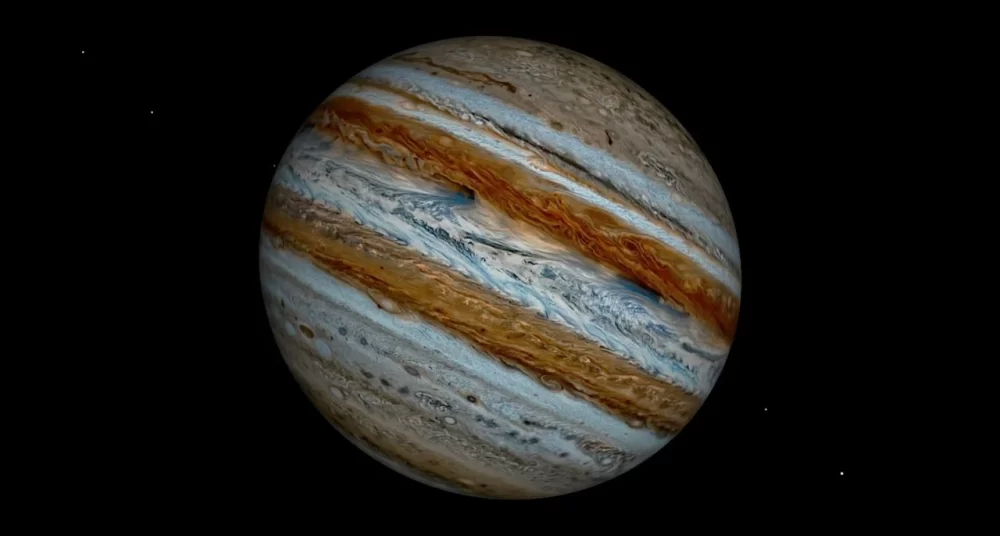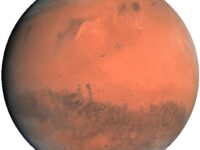The rings of Saturn, the sixth planet and second gas giant from the sun, are no mystery. Merely tannish-brown at first glance, with more recently discovered gray and pink tones, Saturnian rings are much brighter than those of Jupiter, the fifth planet and first gas giant from the sun. While all four gas giants (Uranus and Neptune being the others) have rings, Jupiter’s are perhaps the most enigmatic and interesting.
Better known for its Great Red Spot, an immense storm that has persisted for well over two centuries, Jupiter is the most sizable planet in the solar system. The gas giant’s mass is more than two times that of all the other planets of the solar system put together. In contrast to Saturn’s rings, which are composed of ice, Jupiter’s rings are composed of dust and are difficult to see. Discovered in 1979, more than a century and a half later than Saturn’s rings, Jupiter’s rings appear much dimmer than Saturn’s, even though Jupiter is much closer to Earth. Although Jupiter is such a large plant, its rings are not very thick.
The nature of Jupiter’s rings, discovered by researchers from the University of California at Riverside (UCR), relates to Jupiter’s four largest moons. Called the Galilean moons, these include, from largest to smallest, Ganymede, Callisto, Io, and Europa. The moons, due to their masses, have a strong enough gravity to project ice outside of the planet’s orbit by altering the orbital motion of the ice, leading it to smash into the moons. The moons would rapidly break any big rings that would otherwise develop. Consequently, it is improbable that Jupiter ever previously had any sizable rings.
“Only time will tell what other fascinating discoveries will be made about the largest gas giant in the solar system.”
Besides influencing Jupiter’s rings, the Galilean moons are notable for many other reasons. The moons are only four of Jupiter’s eighty. The Galilean moons, discovered by Galileo Galilei in 1610, were the earliest moons found after Earth’s moon.
“While all four gas giants (Uranus and Neptune being the others) have rings, Jupiter’s are perhaps the most enigmatic and interesting.”
The first two moons are Io and Callisto. Io produces the most intense and frequent volcanoes in the solar system. Io’s exterior contains sulfur in a number of different shades. As Io revolves around Jupiter, the planet’s intense gravity triggers changes in the shape of its moon, a phenomenon known as “tides,” which then triggers volcanoes. The second moon, Callisto, is extremely old and has eight craters, indicating that comets likely struck the surface of the moon previously.
“Experts believe that Europa’s ice is 10 to 15 miles thick and sits atop an ocean 40 to 100 miles in depth. This amount of water is remarkable given that Europa’s diameter is merely a fourth of the earth’s diameter.”
The next two moons, Europa and Ganymede, are even more interesting due to their possible potential for life. Europa is covered mainly by ice, below which might be a sea of water. Experts believe that Europa may have two times more water than Earth. Life is located close to underground volcanoes on Earth and in additional harsh environments, which may have parallels to the geographical features of Europa. Thus, Europa may be able to support life. Experts believe that Europa’s ice is 10 to 15 miles thick and sits atop an ocean 40 to 100 miles in depth. This amount of water is remarkable given that Europa’s diameter is merely a fourth of the earth’s diameter. A spaceship could potentially allow observation of the ocean from space, as Europa’s sea may be propelling water into space.
Ganymede is the largest moon in the solar system, even bigger than Mercury. It is the sole moon discovered to have an intrinsic magnetic field. Because of the magnetic field, the moon has auroras, strings of high-temperature, bright, electric gas, rotating around the moon’s north and south poles. In addition, NASA’s Hubble Space Telescope has found what may be a body of saltwater underground on the moon. Scientists believe that this sea, situated beneath a layer of ice 95 miles thick, may have a greater amount of water than Earth’s entire surface, and be approximately 60 miles thick. This water may support life, an enthralling possibility. Researchers believe that the contact between the water and the rocky terrain beneath it is integral to supporting life.
Jupiter’s rings have captivated scientists, and are impacted by Jupiter’s Galilean moons. The moons are fascinating in and of themselves, particularly in that Ganymede and Europa may be able to support life. Only time will tell what other fascinating discoveries will be made about the largest gas giant in the solar system.
Image courtesy of Pixabay


